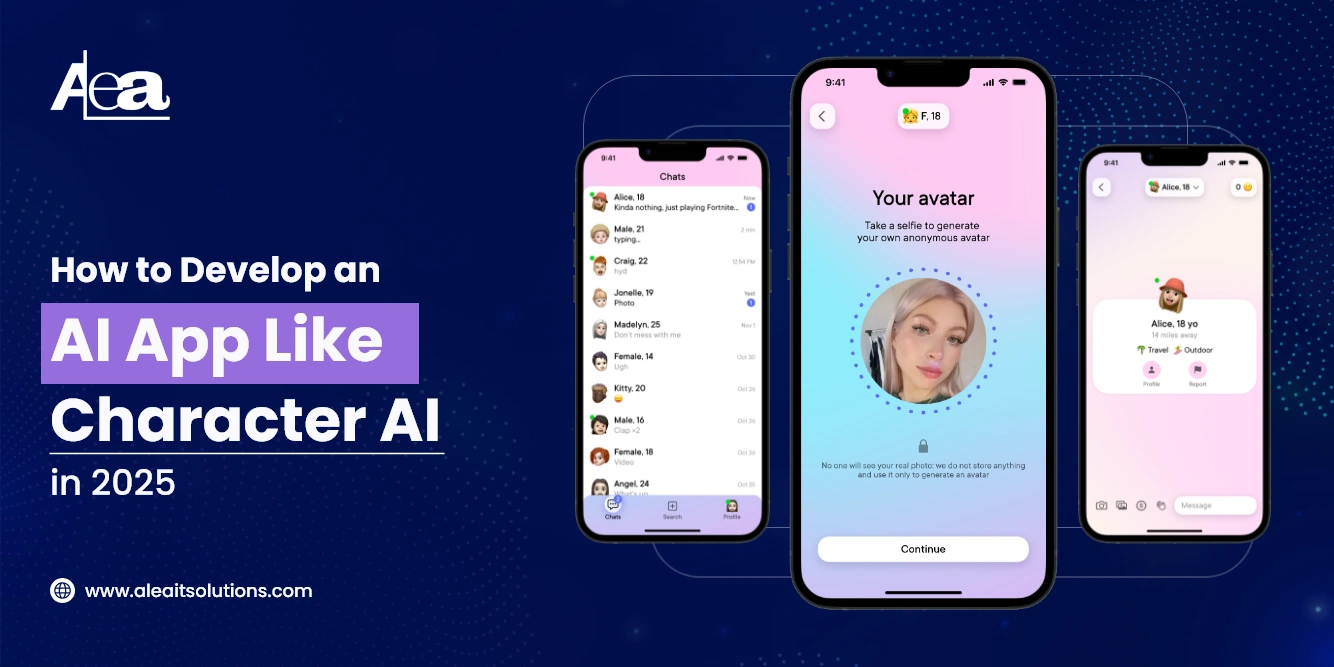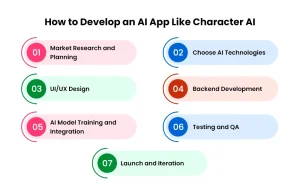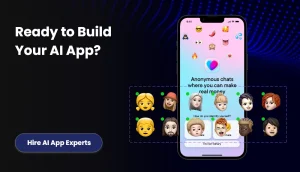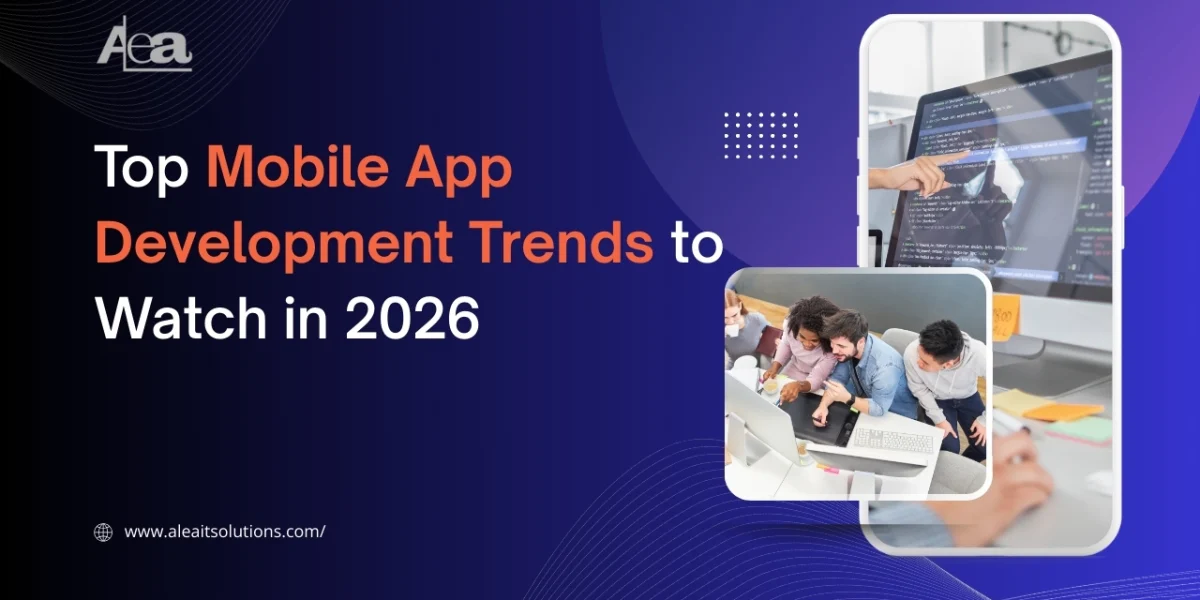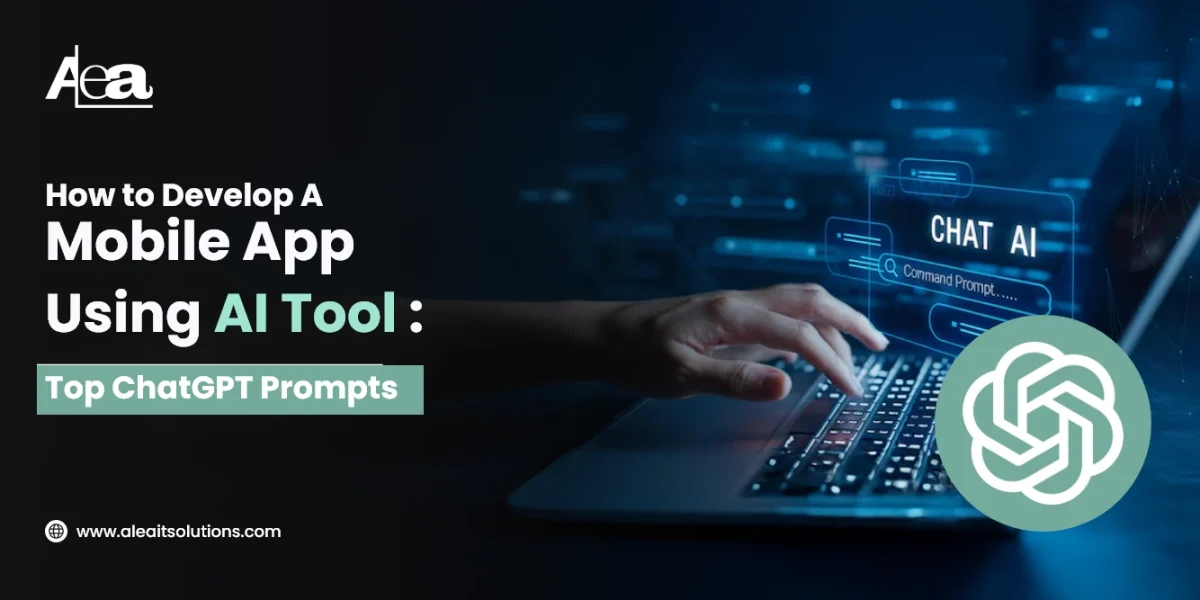The conversational AI revolution has arrived, and it’s transforming how millions of people interact with technology daily.
you’re a startup founder, CTO, or product manager exploring the next wave of AI-driven engagement, building ai chat apps similar to Character AI represents one of the most promising opportunities in 2025.
Character AI has captured the imagination of over 20 million active users worldwide by offering something unique: deeply personalized, character-driven conversations that feel remarkably human.
Unlike traditional apps confined to customer service scripts, these AI companions enable creative storytelling, emotional support, language learning, and entertainment experiences that users return to daily.
The market signals are unmistakable. Venture capital firms invested $4.2 billion in conversational AI startups in 2024 alone, with analysts projecting the sector will grow at a 23% compound annual growth rate through 2030.
Consumer behaviour has shifted dramatically users now spend an average of 47 minutes daily engaging with AI companion apps, surpassing time spent on many traditional social platforms.
What Is Character AI? An Overview of the Platform Redefining Conversational Experiences
Character AI burst onto the scene in late 2022 and quickly became a cultural phenomenon. Built by former Google AI researchers, the platform enables users to create and converse with AI-powered characters spanning historical figures, fictional personas, celebrities, and entirely original creations.
What made Character AI viral wasn’t just its technical sophistication though its neural language model rivals GPT-4 in conversational quality. The platform succeeded because it tapped into fundamental human desires for connection, creativity, and exploration.
Users don’t just chat; they role-play scenarios, practice languages with native-speaker bots, receive personalized tutoring, and even find emotional support through empathetic AI companions.
The platform’s architecture leverages large language models fine-tuned for character consistency and memory retention across conversations. Each character maintains context from previous interactions, creating the illusion of genuine relationship development.
This technical achievement, combined with an intuitive mobile-first interface, drove explosive adoption especially among Gen Z users seeking alternatives to traditional social media.
By early 2025, Character AI processes over 500 million messages monthly, with average session lengths exceeding 28 minutes engagement metrics that make even established social platforms envious.
The platform’s success validated a crucial insight: users crave AI interactions that feel personal, creative, and emotionally resonant rather than transactional.
Market Stats: Growth and Trends for AI Apps Like Character AI
Understanding the market landscape is essential before committing resources to development. The data tells a compelling story about where conversational AI is headed and why now is the optimal time to enter this space.
Market Size: A Multi-Billion Dollar Opportunity
The conversational AI and chat app market were valued at $5.4 billion in 2024. This encompasses enterprise solutions, consumer apps, and the underlying infrastructure powering these experiences.
Analysts forecast the market will reach $15.5 billion by 2030, driven primarily by consumer-facing apps like character ai rather than traditional enterprise.
The consumer segment specifically is expected to grow from $1.8 billion (2024) to $6.2 billion (2030), reflecting the mainstream adoption of AI companions for entertainment, education, and personal development.
This growth presents exciting opportunities for entrepreneurs exploring innovative AI business ideas in the companion app market.
Top 5 AI Apps Like Character AI: Alternatives and Competitors
Understanding the competitive landscape is essential for positioning your platform effectively. Each of these alternatives has carved out distinct market positions through specific feature sets and target audiences.
1. NovelAI: Premium AI for Writers and Role-Players
NovelAI has established itself as the premium option for serious writers and role-players. Beyond text generation, it offers integrated image generation using proprietary anime-styled diffusion models that visualize characters and scenes.
2. Kajiwoto: AI Companions as Virtual Pets
Kajiwoto takes a playful approach, positioning AI companions as virtual pets rather than conversation partners. Users create “Kajis” with distinct personalities and can train them through repeated interaction.
3. Chai AI: Minimal Content Restrictions
Chai AI differentiates through minimal content restrictions, appealing to users frustrated by Character AI’s conservative moderation.
The platform allows mature conversations (within legal boundaries) while maintaining safety rails against genuinely harmful content.
4. Janitor AI: NSFW-Friendly Role-Playing
Janitor AI occupies a controversial but popular niche for adult-themed character interactions. The web-based platform provides sophisticated character creation tools and community sharing.
5. Charstar AI: Collaborative Storytelling
Charstar AI focuses on collaborative storytelling, enabling multiple users to interact with the same AI characters simultaneously. This creates group-based narrative adventures where users collectively shape story outcomes.
How to Develop an AI App Like Character AI
Building a competitive AI companion platform requires methodical execution across seven critical phases. Each step builds upon the previous, creating a foundation for scalable, engaging conversational experiences.
1: Market Research and Planning – Validate Before You Build
Successful app development services begin with rigorous market validation rather than jumping directly into coding. This phase typically requires 3-4 weeks and determines whether your concept has product-market fit.
a. Validate Your Core Hypothesis:
Interview 30-50 potential users from your target demographic. Ask about their current AI app usage, pain points with existing solutions, and what features would make them switch platforms. Quantify willingness to pay through conjoint analysis or Van Westendorp pricing surveys.
b. Analyse Competitors Systematically:
Deep dive into 10-15 existing platforms. Map their feature sets, pricing models, user review complaints, and App Store optimization strategies. Use tools like SimilarWeb and Sensor Tower to estimate traffic, revenue, and growth trajectories. Identify specific opportunities where competitors underserve user needs.
c. Define Your MVP Feature Set:
Resist the temptation to build everything at once. Your minimum viable product should include only the core loop: user onboarding, character selection/creation, text conversation interface, basic memory/context, and simple personalization. Secondary features like voice, image generation, and advanced customization can wait for version 2.0.
Key Deliverables:
- Target persona document (demographics, motivations, pain points)
- Competitive positioning matrix
- MVP feature specification with user stories
- 12-month roadmap with measurable success metricsRead Also: How to Develop an AI Investing App Like Wealthfront
2: Choose AI Technologies – Building Your Intelligence Stack
The AI technology choices you make now will impact product capabilities, operational costs, and competitive positioning for years. This requires balancing cutting-edge performance with practical constraints.
a. Natural Language Processing Foundations:
For ai chat apps like character ai, start with transformer-based architectures. Options include:
- OpenAI GPT-4 API: Fastest time-to-market, exceptional quality, but highest per-conversation cost ($0.03+ per 1K tokens). Best for well-funded startups prioritizing quality over margins.
- Anthropic Claude: Strong ethical safety, excellent conversational flow, mid-range pricing. Ideal for apps in sensitive domains like mental health.
- Open-Source Models (LLaMA 2, Mistral): Self-hosted reduces per-conversation cost to $0.002-0.01 per 1K tokens. Requires significant ML engineering expertise but offers best long-term unit economics.
- Hugging Face Transformers: Vast model library with pre-trained options for specific use cases. Excellent for prototyping and fine-tuning custom models on specialized domains.
b. Machine Learning Frameworks:
Build your training and inference pipeline with battle-tested tools:
- PyTorch: Preferred by research teams for flexibility and debugging. Use for custom model development and fine-tuning.
- TensorFlow/Keras: Better production deployment tools and mobile optimization. Consider for inference serving if targeting on-device AI.
- LangChain: Simplifies building applications with LLMs handles prompt templates, memory management, and tool integration. Essential for rapid prototyping.
Read Also: Best Mobile App Development Frameworks
c. Cloud Services and Infrastructure:
- AWS SageMaker: Comprehensive ML platform with pre-built algorithms, notebook environments, and one-click deployment. Higher cost but reduces DevOps complexity.
- Google Cloud AI Platform: Strong AutoML capabilities and Vertex AI for model serving. Best integration with Google’s proprietary models.
- Azure ML: Preferred if integrating with Microsoft enterprise ecosystem. Good cognitive services APIs for speech and vision.
Key Deliverables:
- Technology decision matrix with cost projections at 10K, 100K, 1M monthly active users
- Proof-of-concept demonstrating response quality for your specific use case
- Vendor agreements and API access credentials
3: UI/UX Design
Great conversational AI technology means nothing if wrapped in a confusing or uninspiring interface. Design determines whether users embrace or abandon your platform.
a. User Journey Mapping:
Document every step from app store listing through first conversation and return visits. Identify friction points and moments of delight. Your conversion funnel should optimize for getting users to their first meaningful conversation within 90 seconds of app open.
b. Wireframing Core Screens:
Create low-fidelity wireframes for:
- Onboarding flow (2-3 screens maximum)
- Character discovery/browsing interface
- Conversation view with message composition
- Character creation/customization
- Settings and subscription management
Use tools like Figma or Sketch for collaborative design that ai developers can directly reference. Include annotations explaining interaction patterns, loading states, and error handling.
c. Mobile-First Responsive Design:
78% of AI companion app usage happens on mobile devices. Design for thumb-friendly interactions, optimize for various screen sizes (iPhone SE through iPad), and ensure readability in diverse lighting conditions. Test on actual devices, not just emulators.
Read Also:
4. Accessibility Considerations:
Build for WCAG 2.1 AA compliance from day one. Include:
- Sufficient colour contrast (4.5:1 minimum for text)
- Screen reader labels for all interactive elements
- Keyboard navigation support
- Font size controls and dyslexia-friendly type options
Key Deliverables:
- High-fidelity mock-ups for 15-20 core screens
- Interactive prototype demonstrating primary user flows
- Design system documentation (colours, typography, components)
- Accessibility audit checklist
4: Backend Development – Engineering Reliability at Scale
Your backend architecture determines whether your platform gracefully scales from 100 to 100,000 concurrent users or collapses under load. This phase typically requires 8-12 weeks for an MVP.
a. Server and API Architecture:
Use Node.js or Python (FastAPI/Django) for your application server. Implement RESTful APIs for standard CRUD operations and WebSocket connections for real-time message streaming. Deploy behind a load balancer (AWS ALB or CloudFlare) with auto-scaling groups that spin up instances based on CPU/memory metrics.
b. Database Selection and Schema Design:
- MongoDB or PostgreSQL: Store user profiles, subscriptions, and character definitions
- Vector Database (Pinecone, Weaviate, Qdrant): Store conversation embeddings for semantic memory retrieval
- Redis: Cache frequently accessed data (popular characters, recent conversations) with 5–15-minute TTLs to reduce database load
Design your schema for horizontal scalability shard user data by user_id, implement read replicas for analytics queries, and use connection pooling to optimize database performance.
c. AI Model Integration:
Create a dedicated microservice for AI inference that’s isolated from your main application logic. This enables independent scaling of compute-intensive AI operations and simplifies model swapping or A/B testing different models. Implement request queuing with priority tiers (premium users get faster processing) and timeout handling for long-running requests.
d. API Integrations:
Connect third-party services for:
- Payment processing (Stripe with webhook handling for subscription events)
- Email delivery (SendGrid with transactional templates)
- Analytics (Mixpanel for behavioral tracking, Sentry for error monitoring)
- Content moderation (Perspective API or Hive for automated filtering)
Key Deliverables:
- Scalable backend architecture deployed on staging environment
- API documentation using OpenAPI/Swagger
- Database migration scripts and backup procedures
- Load testing report demonstrating 1,000 concurrent conversation capacity
5: AI Model Training and Integration – Teaching Your AI to Converse
This phase transforms generic language models into character-consistent conversational AI that feels personalized and engaging.
a. Data Sourcing and Preparation:
Acquire or generate training datasets including:
- 10M+ dialogue pairs from public conversation datasets (Cornell Movie Dialogs, PersonaChat)
- Character-specific corpora (e.g., Shakespeare’s complete works for a historical character)
- User feedback data from initial beta testing (upvoted responses, conversation continuation rates)
Clean and format data into prompt-completion pairs suitable for fine-tuning. Remove personally identifiable information, filter toxic content, and balance dataset to prevent bias amplification.
b. Model Fine-Tuning Strategy:
If using pre-trained models, fine-tune on your specific use case:
- Start with a small validation set (10,000 examples) to establish baseline performance
- Train using parameter-efficient techniques like LoRA or QLoRA to reduce compute costs
- Monitor perplexity metrics and qualitative response quality throughout training
- Iterate on prompt engineering strategies that guide the model toward desired response patterns
c. Bias Detection and Mitigation:
Run comprehensive bias audits:
- Test responses across gender, race, age, and cultural dimensions
- Implement fairness metrics (demographic parity, equalized odds)
- Deploy adversarial testing to identify edge cases where the model produces problematic outputs
- Create human-in-the-loop review processes for flagged content
Key Deliverables:
- Fine-tuned model achieving <3.5 perplexity on validation set
- Bias audit report with mitigation strategies implemented
- Model versioning system for A/B testing and rollback capability
- Inference benchmarks (p50, p95, p99 latency under load)
Step 6: Testing and QA – Ensuring Reliability and Safety
Comprehensive testing prevents embarrassing failures, security breaches, and regulatory compliance issues. Allocate 15-20% of total development time to this phase.
a. Functional Testing:
Verify every feature works as specified:
- Unit tests for individual components (target 80%+ code coverage)
- Integration tests for API endpoints and database operations
- End-to-end tests simulating complete user journeys
- Regression tests ensuring new features don’t break existing functionality
Use frameworks like Jest (JavaScript), Pytest (Python), and Selenium for automated testing. Run tests automatically on every code commit through CI/CD pipelines.
Read Also: Python vs JavaScript: Which Is Better for Web Development
b. Security Audits and GDPR Compliance:
Conduct penetration testing to identify vulnerabilities:
- SQL injection and XSS attack vectors
- Authentication bypass attempts
- Data exfiltration possibilities through API manipulation
- Third-party dependency vulnerabilities (run weekly Snyk or Dependabot scans)
c. For GDPR compliance, verify:
- User consent collection and storage mechanisms
- Data export functionality (JSON format, delivered within 30 days)
- Right-to-deletion implementation (complete data removal within 90 days)
- Data processing agreements with all third-party vendors
d. Performance Optimization:
Load test your infrastructure:
- Simulate 10x expected peak concurrent users
- Measure API response times under stress (target p95 < 500ms)
- Monitor database query performance and optimize slow queries
- Test auto-scaling triggers and verify graceful scaling behaviour
e. Content Safety Testing:
Evaluate AI safety mechanisms:
- Red team testing with adversarial prompts attempting to elicit harmful outputs
- Edge case conversations (suicide ideation, violent content, illegal activities)
- Cross-language testing to ensure safety measures work in all supported languages
- Minority stress testing for protected demographic groups
Key Deliverables:
- Comprehensive test suite with automated execution
- Security audit report with all critical/high vulnerabilities resolved
- Performance benchmarks documented in runbook
- Content safety scorecard with moderation accuracy metrics
Step 7: Launch and Iteration – Going Live and Continuous Improvement
Launch isn’t the finish line it’s the beginning of continuous learning and optimization.
a. App Store Submission and Optimization:
Prepare polished submission packages:
- iOS: Screenshots optimized for all device sizes, app preview video (15-30 seconds), compelling description with keyword optimization, privacy policy URL
- Android: Feature graphic, promotional video, detailed description with bullet points, content rating questionnaire
Optimize metadata for App Store SEO research keywords with high search volume and low competition. Track rankings weekly and iterate on metadata based on conversion data.
b. User Feedback Collection:
Implement multi-channel feedback loops:
- In-app rating prompts triggered after positive experiences (completing 5+ conversations)
- Support ticket system with categorization for rapid triage
- User research sessions (30-minute interviews with power users monthly)
- Analytics tracking for behavioural signals (feature usage, drop-off points, error frequencies)
c. AI Model Updates and MLOps:
Establish systematic improvement cycles:
- Retrain models quarterly with new conversation data
- A/B test model variants on 5-10% of traffic before full rollout
- Monitor quality metrics continuously (user satisfaction ratings, conversation length, message regeneration rates)
- Implement shadow deployment for testing new models without user impact
d. Rapid Iteration Cycles:
Deploy updates frequently:
- Critical bug fixes within 24 hours
- Minor features and improvements bi-weekly
- Major features monthly with beta testing programs
- Maintain feature flags to enable instant rollback if issues emerge
Key Deliverables:
- Live production environment serving real users
- Analytics dashboard tracking KPIs (DAU, retention, revenue)
- MLOps pipeline for continuous model improvement
- 90-day post-launch optimization roadmap
Tech Stack for Building an App Like Character AI
Choosing the right technology stack ensures your AI chatbot app delivers speed, scalability, and seamless conversational experiences. Below is a complete breakdown of the ideal architecture for building an app like Character AI.
| Module | Technology Stack | Key Tools & Frameworks |
|---|---|---|
| Frontend – Building Responsive Cross-Platform Interfaces | React Native, React, Vue.js | Axios / Fetch API, Socket.io-client, React Navigation / Vue Router, Styled Components / Tailwind CSS |
| Backend – Powering Real-Time Conversations | Python (Django / FastAPI), Node.js (Express.js) | Django Channels, Socket.io, REST / GraphQL APIs |
| AI / ML – The Intelligence Layer | GPT Models (OpenAI, Anthropic, etc.), spaCy, LangChain, LlamaIndex, Stable Diffusion / DALL·E | Model Gateway Patterns, Prompt Templates, RAG Integrations |
| Database & Storage – Managing State and Memory | PostgreSQL, MongoDB, Firebase, Firestore, Redis | Amazon S3 / Google Cloud Storage, Pinecone, Weaviate, Qdrant |
| DevOps – Automating Deployment and Scaling | Docker, Kubernetes | Jenkins, GitHub Actions, GitLab CI |
| Monitoring & Observability | Prometheus, Grafana, Sentry | DataDog, New Relic, CloudWatch, Stackdriver |
| Emerging Technologies – Futureproofing the Stack | Edge AI, Federated Learning, Quantum Computing | Core ML, TensorFlow Lite, IBM Quantum, Google Quantum AI |
Crucial Factors Influencing Cost of Developing an App Like Character AI
Building a competitive AI companion platform requires significant investment across multiple dimensions. Understanding these cost drivers enables realistic budgeting and helps identify where to allocate resources for maximum impact.
| Component | Cost Range (USD) |
| AI Model Complexity | $25,000 – $2,000,000+ |
| Data Gathering & Analysis | $30,000 – $120,000 |
| Basic Features | $40,000 – $70,000 |
| Advanced Features | $160,000 – $400,000+ |
| Personalization Layer | $25,000 – $80,000 |
| Tech Stack & Infrastructure | $200 – $2,000/month + compute costs |
| System Integration | $2,000 – $25,000 per integration |
| Continuous AI Improvement | $5,000 – $25,000 quarterly/annually |
| UI/UX Design | $30,000 – $90,000 |
| Data Security & Compliance | $28,000 – $155,000+ |
Team Location: Geographic Cost Variations
“Your AI’s cost isn’t just a price tag—it’s a strategic choice. Hourly rates for AI development services vary dramatically by region:
You can slash your development budget by choosing a world-class team with lower overhead, freeing up crucial capital to invest directly into the high-powered AI models that make your app intelligent.”
| Region | Hourly Rate | Project Cost Multiplier |
| United States | $95-$180 | 1.0x (baseline) |
| Western Europe | $70-$130 | 0.75x |
| Eastern Europe | $40-$75 | 0.50x |
| India | $25-$50 | 0.35x |
| Southeast Asia | $30-$60 | 0.40x |
In-App Purchases: Monetizing Customization
Virtual goods and one-time purchases complement subscription revenue:
Character Packs: Curated collections of premium characters ($2.99-9.99)
Custom Skins/Themes: Visual customization options ($1.99-4.99)
Message Boosts: Temporary unlimited access (100 messages for $0.99)
Voice Packs: Celebrity or specialized voices for character audio ($4.99-9.99)
Storage Expansion: Increased conversation history retention ($2.99/month)
This model works particularly well for casual users who don’t want subscriptions but will pay opportunistically for specific wants. Kajiwoto generates 30% of revenue through in-app purchases despite subscriptions being available.
Key Cost Influencers Explained
1. AI Model Complexity
Advanced models like GPT-4 or Claude require large-scale compute and training. Most startups reduce costs by fine-tuning pre-trained models. Ongoing inference costs scale with user base.
2. Data Gathering & Analysis
High-quality datasets ensure conversational accuracy and personality consistency. Both licensed and proprietary data require budget allocation for preparation and annotation.
3. Features & Functionality
Basic apps cover text chat and simple characters. Advanced apps add voice, image generation, sentiment analysis, AR/VR, and analytics dashboards, increasing development costs significantly.
4. Personalization & User Experience
Allowing users to create custom characters boosts engagement and retention but adds complexity in UI/UX and backend memory systems.
5. Tech Stack & Infrastructure
Choosing between managed AI services and self-hosted solutions impacts both cost and scalability. Cloud services, vector databases, and AI APIs form the backbone of reliable apps.
6. System Integration
Seamless integration with CRMs, payment gateways, analytics, and communication platforms ensures smooth user experiences and better monetization.
7. Continuous AI Improvement
AI apps require ongoing retraining, A/B testing, and audits to maintain performance and safety standards, accounting for 10–20% of the engineering budget.
8. Team Location
Development costs vary by region. Distributed teams allow high-quality development at cost-effective rates without compromising performance.
9. UI/UX Design
Investing in design increases user retention and engagement. Wireframes, prototypes, and motion design contribute significantly to the overall budget.
10. Data Security & Compliance
Secure handling of personal conversations is crucial. GDPR, encryption, audits, and privacy policies are mandatory; specialized certifications like HIPAA or PCI-DSS add additional costs.
Why Aleait Solutions Is the Go-To AI App Development Company for Apps Like Character A
The demand for hyper-personalized, conversational experiences is exploding. Don’t let your big idea for a Character AI-style app get lost in the noise.
When you partner with AleaIT Solutions, you’re not just hiring a mobile application development company you’re securing a launchpad for success.
Unleash the Power of Expert AI App Development Services
Building an app like Character AI requires a rare blend of deep learning expertise and mobile mastery. Here is why AleaIT is the definitive choice for your project:
Conversational AI at Our Core:
We don’t just bolt on a chatbot. Our specialization in AI development services includes:
- LLM Integration: Seamlessly integrating powerful Large Language Models (LLMs) to ensure your virtual characters are realistic, context-aware, and engaging.
- Custom Character Brains: Building the sophisticated logic required for your characters to maintain unique personalities, memory, and emotional range—a direct answer to the “Character AI clone” challenge.
Full-Stack Mobile App Development Company Expertise:
We are a proven application development company with a 20+ year track record. This means your high-tech AI brain will be wrapped in a flawless user experience, whether it’s for Android or iOS:
With a strong presence and transparent processes, we deliver premium AI app development services without the premium price tag.
You gain a dedicated team of experts in Machine Learning, Data Science, and Mobile Development, providing superior value for money and a clear path to ROI.
Conclusion: Launch Your App Like Character AI with Confidence
The conversational AI revolution is accelerating, creating unprecedented opportunities for entrepreneurs and enterprises willing to build the next generation of AI companion platforms.
The market has validated consumer demand 20+ million users globally are already engaging daily with ai chat apps, spending an average of 47 minutes per session seeking entertainment, education, emotional support, and creative expression.
Building a competitive platform requires more than deploying a language model behind a chat interface. Success demands thoughtful architecture balancing AI capability with user experience, rigorous attention to safety and ethics, scalable infrastructure prepared for viral growth, and business models that monetize effectively without compromising user trust.
The technical roadmap is clear: validate your concept through user research, architect systems for scale from day one, select AI technologies matching your budget and capabilities, design interfaces that feel magical rather than mechanical, implement multi-layered safety systems protecting users, and iterate rapidly based on real-world feedback.
Cost expectations should reflect your ambitions. MVP validation requires $40,000-70,000 and 3-4 months. Competitive market entry demands $80,000-150,000 and 6-7 months.
Category-defining platforms with advanced features need $160,000-400,000+ and 9-15 months. All estimates assume experienced teams; inexperienced builders should double these timelines and budgets.
The opportunity window won’t stay open indefinitely. First-movers are establishing brand recognition, accumulating training data from millions of conversations, and building network effects through user-generated character libraries. Companies entering 12-18 months from now face significantly higher user acquisition costs and stronger competitive moats.
FAQ’s
Q1: How much does it cost to build an AI chat app like Character AI?
A basic MVP costs $40,000–$70,000 (3–4 months). Mid-tier versions with better AI, voice, and UI range $80,000–$150,000 (5–7 months). Advanced platforms with custom AI, multimodal features, and global scaling cost $160,000–$400,000+ (9–15 months). Ongoing AI costs vary by usage from $3,000–$150,000/month.
Q2: Can I create my own AI app?
Yes. You can use no-code tools like Botpress or Voiceflow for simple bots or frameworks like LangChain and Hugging Face for advanced ones. Expect 3–6 months to build a basic app solo, or faster with expert developers.
Q3: What are the top alternatives to Character AI?
Popular alternatives include NovelAI (creative writing), Kajiwoto (pet-style bots), Chai AI (mobile-first chat), Charstar AI (multi-character roleplay), and Janitor AI (adult themes). Each caters to different audiences and pricing models.
Q4: Can I build my own AI like ChatGPT?
You can’t fully replicate ChatGPT’s $100M+ scale, but you can create specialized AIs using models like LLaMA 2 or Mistral for $25,000–$150,000. Focus on niche excellence rather than general intelligence.
Q5: What are must-have features of an AI chat app?
Key features include:
- NLP-driven conversations
- Customizable characters
- Learning & memory
- Multi-turn dialogues
- Sentiment analysis & moderation
- Optional voice and image generation
Q6: How long does it take to develop an AI chat app?
MVPs take 3–4 months, mid-tier apps 5–7 months, and advanced platforms 9–15 months depending on features, complexity, and team size.
Q7: Do I need coding skills to build one?
Not necessarily. No-code tools handle basics, but complex apps need real developers. Learning Python, JavaScript, and APIs helps if you’re building independently.
Q8: What tech stack is needed?
Core stack:
- AI: GPT-4, Claude, LLaMA 2, Hugging Face
- Frontend: React, Flutter, Swift
- Backend: Python/FastAPI, Node.js, PostgreSQL
- Cloud: AWS, Google Cloud, Azure
Plus integrations for payment, analytics, and moderation.
Q9: How do I ensure my AI chat app is secure?
Implement TLS encryption, role-based access, GDPR compliance, API rate limiting, and regular security audits. Use moderation APIs to ensure safe user interactions.
Q10: How can I monetize an AI chat app?
Top models:
- Freemium subscriptions ($8–$35/month)
- In-app purchases (character packs, voices)
- Ads for free users
- B2B licensing & APIs
- Anonymized data insights (with consent)

